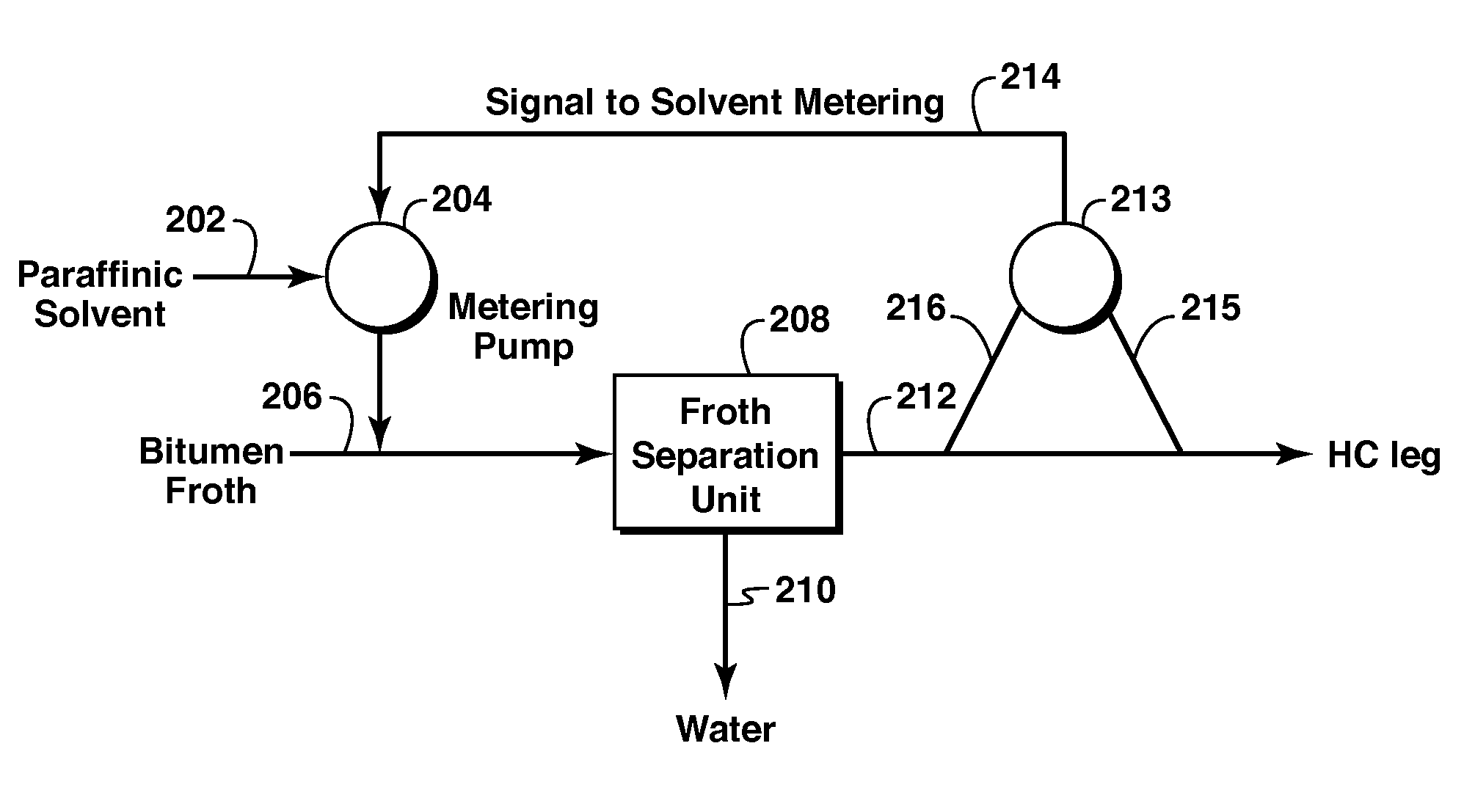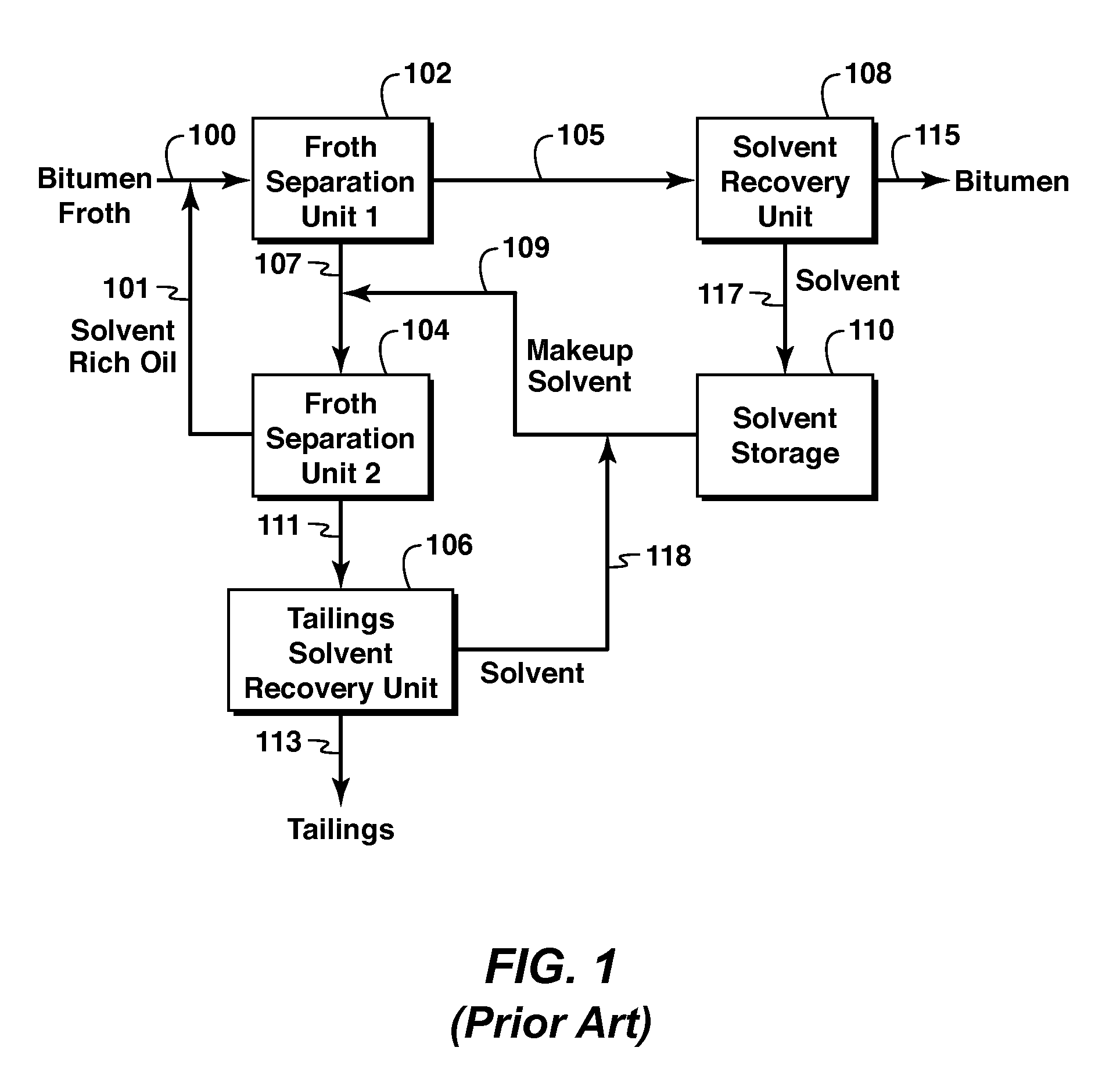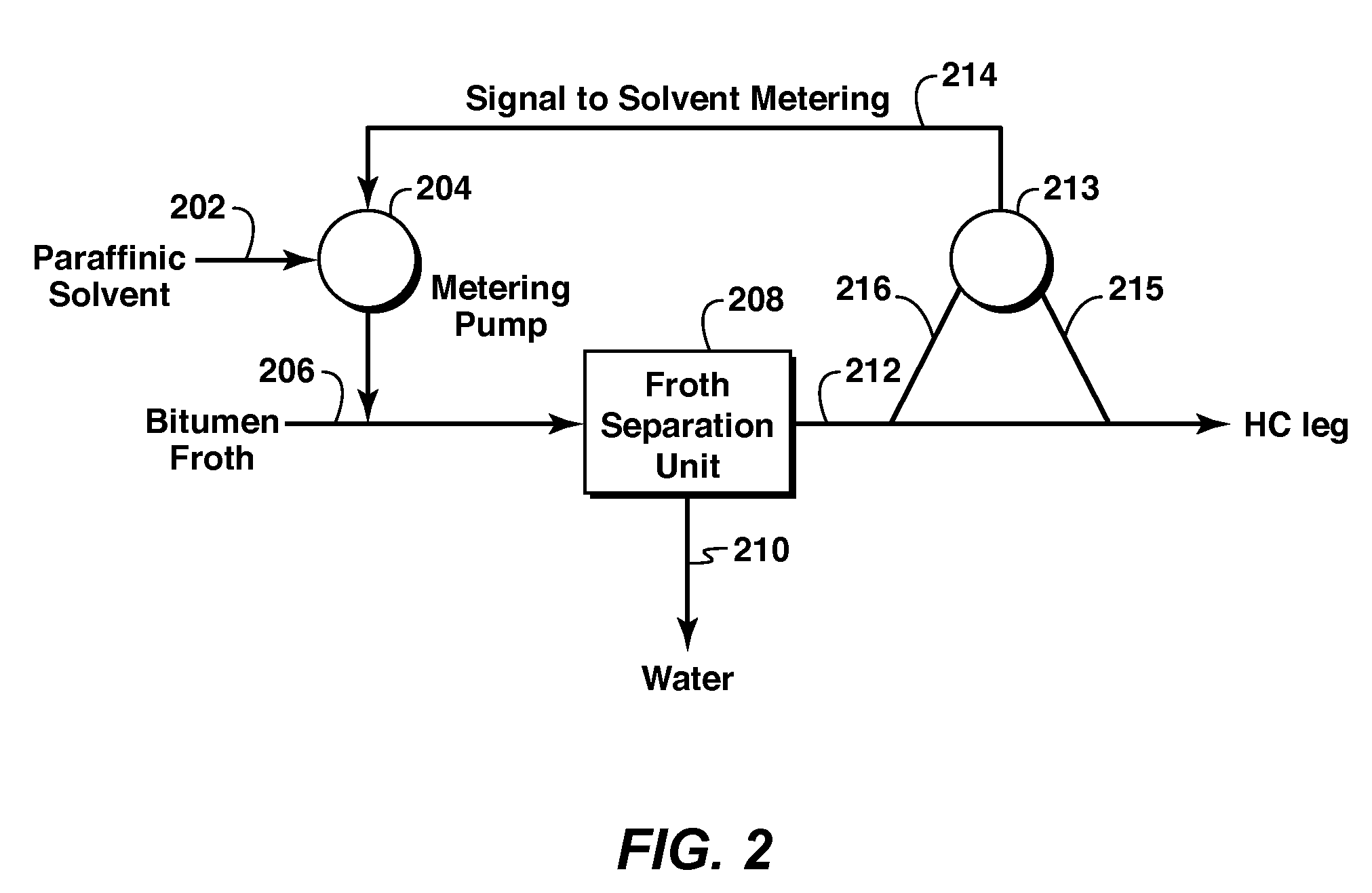Method for using native bitumen markers to improve solvent-assisted bitumen extraction
a native bitumen and solvent technology, applied in material analysis using wave/particle radiation, instruments, nuclear engineering, etc., can solve the problems of explosive conditions, waste of solvent, and environmental pollution of solvent remaining in tailings ponds,
- Summary
- Abstract
- Description
- Claims
- Application Information
AI Technical Summary
Benefits of technology
Problems solved by technology
Method used
Image
Examples
example 1
Controlling STBR by Measuring Sulfur
[0037]In this example, it is assumed that the target STBR is 2:1 (w / w) and the target PFT bitumen solvent blend sulfur corresponding to this ratio is 1.0 wt %.
[0038]During start-up of the plant, the XRF measures the PFT bitumen solvent blend sulfur to be 1.5 wt % which indicates that sulfur concentration is higher than the target sulfur concentration and that the STBR is less than the target ratio.
[0039]The controller is programmed to add additional solvent through the metering pump until the target solvent to bitumen ratio is achieved.
example 2
Comparing the use of Native Markers versus Density for Measuring the STBR
[0040]This example compares an embodiment of the present invention using sulfur measurement with a conventional method using density measurement.
[0041]PFT bitumen (taken from the Kearl oil sands in Alberta) was mixed with condensate (solvent) (taken from a Cold Lake oil sands operation in Alberta) to achieve the target STBR of 1.60 (w / w). The density of the blend at the target STBR was calculated using a tuned density blending model. The sulfur concentration (wt %) in the blend was also calculated from the sulfur concentration in the bitumen, assuming the solvent had no sulfur.
[0042]To determine the sensitivity of the density and sulfur levels to the changes in the STBR, the latter was varied first from 1.54 to 1.66 (w / w) to represent an example of an acceptable variation during normal operation of the FSU. This variation led to a density difference of only ±0.28% from the density at the target solvent to bitum...
PUM
| Property | Measurement | Unit |
|---|---|---|
| temperature | aaaaa | aaaaa |
| Inductively Coupled Plasma | aaaaa | aaaaa |
| size | aaaaa | aaaaa |
Abstract
Description
Claims
Application Information
 Login to View More
Login to View More - R&D
- Intellectual Property
- Life Sciences
- Materials
- Tech Scout
- Unparalleled Data Quality
- Higher Quality Content
- 60% Fewer Hallucinations
Browse by: Latest US Patents, China's latest patents, Technical Efficacy Thesaurus, Application Domain, Technology Topic, Popular Technical Reports.
© 2025 PatSnap. All rights reserved.Legal|Privacy policy|Modern Slavery Act Transparency Statement|Sitemap|About US| Contact US: help@patsnap.com



